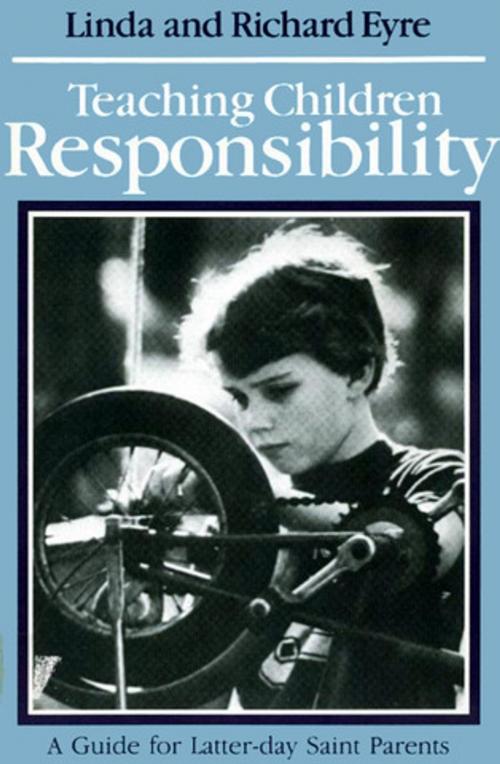| Author: | Richard Eyre | ISBN: | 9781609082826 |
| Publisher: | Deseret Book Company | Publication: | August 30, 2015 |
| Imprint: | Deseret Book Company | Language: | English |
| Author: | Richard Eyre |
| ISBN: | 9781609082826 |
| Publisher: | Deseret Book Company |
| Publication: | August 30, 2015 |
| Imprint: | Deseret Book Company |
| Language: | English |
When authors Linda and Richard Eyre asked, "What does God want for his children in mortality?" they discovered a profound and simple scriptural answer. They determined that helping children accomplish their purposes in mortality could best be achieved by first teaching children joy, then responsibility, then charity. Their first book of this series, Teaching Children Joy, has found a ready acceptance by parents who have successfully implemented its detailed and practical program. Teaching Children Responsibility picks up where that book leaves off. At its most basic level, the authors state, responsibility is obedience. At the next level it becomes stewardship, then discipline, then service. The earlier levels of responsibility prepare a child to accept later levels. In connection with these stages of teaching, parents may help their child learn responsibility to his parents, for obedience, for his things, and for work. As a good steward he will learn to be responsible to Heavenly Father for his actions, his gifts (talents), and the Holy Ghost. By learning discipline, he becomes responsible to himself and his choices, his potential, and his character. And finally, he learns to be of service to his family and others, to be dependable, and to realize his responsibility to make a contribution to the world in which he lives. Parents who desire to help their children become responsible adults, both temporally and spiritually, will find many helpful suggestions and ideas in this book.
When authors Linda and Richard Eyre asked, "What does God want for his children in mortality?" they discovered a profound and simple scriptural answer. They determined that helping children accomplish their purposes in mortality could best be achieved by first teaching children joy, then responsibility, then charity. Their first book of this series, Teaching Children Joy, has found a ready acceptance by parents who have successfully implemented its detailed and practical program. Teaching Children Responsibility picks up where that book leaves off. At its most basic level, the authors state, responsibility is obedience. At the next level it becomes stewardship, then discipline, then service. The earlier levels of responsibility prepare a child to accept later levels. In connection with these stages of teaching, parents may help their child learn responsibility to his parents, for obedience, for his things, and for work. As a good steward he will learn to be responsible to Heavenly Father for his actions, his gifts (talents), and the Holy Ghost. By learning discipline, he becomes responsible to himself and his choices, his potential, and his character. And finally, he learns to be of service to his family and others, to be dependable, and to realize his responsibility to make a contribution to the world in which he lives. Parents who desire to help their children become responsible adults, both temporally and spiritually, will find many helpful suggestions and ideas in this book.















